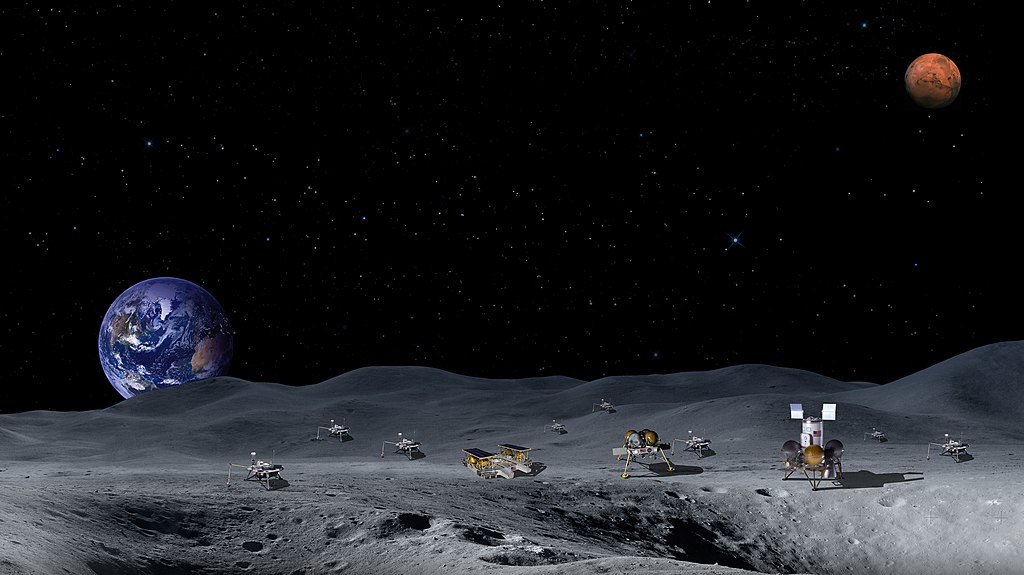In a significant stride for lunar exploration, Japanese company ispace and U.S.-based Firefly Aerospace launched moon landers aboard a SpaceX rocket from Florida. This rare double mission highlights the growing competition among nations and private firms aiming to explore the moon's potential for resources and astronaut bases.
Ispace's Hakuto-R Mission 2 marks its second attempt after a failed landing in April 2023 due to altitude miscalculation. Its lander, Resilience, is set to deliver $16 million worth of customer payloads, including an in-house "Micro Rover" for collecting lunar samples. The spacecraft is on a fuel-efficient trajectory, with a planned touchdown in May or June 2025.
Firefly Aerospace's Blue Ghost is the third moon lander under NASA's Commercial Lunar Payload Services (CLPS) program. Carrying ten payloads, including one from Honeybee Robotics, it aims to land on the moon by March 2025. Both missions are expected to last one lunar day (roughly two weeks) before succumbing to extreme lunar nighttime temperatures.
The U.S. and China are advancing lunar exploration, with NASA targeting human moon landings under the Artemis program by 2027 and China planning crewed missions by 2030. CLPS missions, like Firefly’s, play a vital role in developing lunar infrastructure ahead of NASA’s crewed Artemis missions, which will utilize SpaceX’s Starship and Blue Origin's Blue Moon lander.
With the growing interest in lunar resources and geopolitical implications, the moon has become a stage for innovation and competition, reminiscent of the Cold War-era space race. Nicky Fox, NASA’s science mission directorate head, reaffirmed the agency’s commitment to lunar exploration despite potential program adjustments.



 SpaceX Begins IPO Preparations as Wall Street Banks Line Up for Advisory Roles
SpaceX Begins IPO Preparations as Wall Street Banks Line Up for Advisory Roles  Intel’s Testing of China-Linked Chipmaking Tools Raises U.S. National Security Concerns
Intel’s Testing of China-Linked Chipmaking Tools Raises U.S. National Security Concerns  SpaceX Insider Share Sale Values Company Near $800 Billion Amid IPO Speculation
SpaceX Insider Share Sale Values Company Near $800 Billion Amid IPO Speculation  NASA Astronauts Wilmore and Williams Recover After Boeing Starliner Delay
NASA Astronauts Wilmore and Williams Recover After Boeing Starliner Delay  Blue Origin’s New Glenn Achieves Breakthrough Success With First NASA Mission
Blue Origin’s New Glenn Achieves Breakthrough Success With First NASA Mission  Jared Isaacman Confirmed as NASA Administrator, Becomes 15th Leader of U.S. Space Agency
Jared Isaacman Confirmed as NASA Administrator, Becomes 15th Leader of U.S. Space Agency  Neuralink Expands Brain Implant Trials with 12 Global Patients
Neuralink Expands Brain Implant Trials with 12 Global Patients  TikTok U.S. Deal Advances as ByteDance Signs Binding Joint Venture Agreement
TikTok U.S. Deal Advances as ByteDance Signs Binding Joint Venture Agreement  Republicans Raise National Security Concerns Over Intel’s Testing of China-Linked Chipmaking Tools
Republicans Raise National Security Concerns Over Intel’s Testing of China-Linked Chipmaking Tools  Trump Signs Executive Order to Boost AI Research in Childhood Cancer
Trump Signs Executive Order to Boost AI Research in Childhood Cancer  Oracle Stock Slides After Blue Owl Exit Report, Company Says Michigan Data Center Talks Remain on Track
Oracle Stock Slides After Blue Owl Exit Report, Company Says Michigan Data Center Talks Remain on Track  OpenAI Explores Massive Funding Round at $750 Billion Valuation
OpenAI Explores Massive Funding Round at $750 Billion Valuation  CDC Vaccine Review Sparks Controversy Over Thimerosal Study Citation
CDC Vaccine Review Sparks Controversy Over Thimerosal Study Citation 































